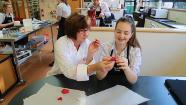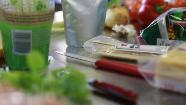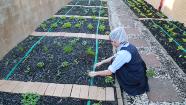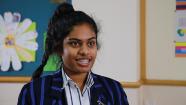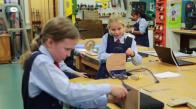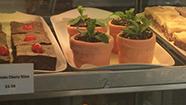Renee talks about celebrating secondary students' creativity and focusing on design.
Lighting with a digital and design focus
Transcript
So when we had the opportunity to develop the lighting project, we looked at the previous successes and we definitely recognised that the girls really enjoyed the practical aspects, but we wanted to celebrate their creativity a lot more. And we wanted to incorporate more design, spend more time on their design and visual communication. And so with a very authentic context in mind, we then looked at standards, and we figured that going for a DVC standard over generic technology allowed for the focus on design. And by incorporating the digital technologies we were still able to provide the girls with the opportunity to make a fully functional prototype.
So they start with a piece of inspiration. It could be something quite removed from the context of lighting and they go through stages of ideation – they abstract, they work through sketches and paper models to find some beauty. And then once they have developed the sculptural idea for their light they move on to using their digital tools to prepare the files for the production.
So the final outcome for this project is a fully functional prototype of a piece of lighting design that the girls have been able to get produced at the Fab Lab – laser cut. We don’t assess the girls on their prototype. We look at the process of developing their ideas using their visual communication techniques. But the nice thing is that the actual production takes a very small amount of time and it produces this really high-quality outcome that we can then use in their presentation standards.
So we want to make sure that our projects are as authentic as possible. We try to mirror what is happening in industry and there’s a lot of quite small design offices out there these days that don’t have a lot of production resources available to them. And so what they do is, they will outsource, and so we tried to mirror that as best as we can by doing all the hands-on work with sketching and modelling with paper in class and then outsourcing with places like Fab Lab to get the final prototype produced.
So we really wanted to incorporate as many outside influences as possible to again, mirror what is happening out there in industry. And so we’ve looked to lighting designers like David Trubridge in the past. We’ve had him speak to the girls via Skype to give them an insight into his practice and that the girls are now following themselves. And we’ve also worked with ECC Lighting. They're a high-end lighting company, just down the road from us, fortunately, so we’ve been able to go there and see how they work, see some beautiful examples of lighting designs. And we work with a local electrician company who provide us with the lighting technologies.
I used to work as a lighting designer myself, and so if you’re thinking of following this sort of approach, I would suggest sticking to something that you are very passionate about. Lighting is something I really really enjoy working with. It’s a great medium and it allows for a lot of exploration and communication and it builds a lot of skill. And so because I am really interested in it, I think that it rubs off on my students. It’s quite infectious. They really enjoy the fact that I really enjoy it as well. And so I would probably challenge you to find something that you are really passionate about, and then it will come through your passion and your projects.
Related videos
Getting the context right (01:31)
Students, teachers, and the school community are interested and engaged in the projects and products in the technology programme, says Judi Delbridge....
Real food, real fast (02:35)
Students were set a brief to develop a faster, fresher, healthier takeaway based on an analysis of a traditional recipe....
A food bag for a family dinner (03:31)
With a focus on using seasonal produce and their families as stakeholders, students produced great recipes and food bags for a family dinner....
My context and issue (04:57)
Year 13 students share about the contexts and issues they have chosen in their food technology programme.
Engaging contexts in product design (03:09)
Abby Dingle discusses materials and tools that engage students in product design.
Authentic modern food contexts in senior programmes (03:28)
Ritu Sehji empowers her senior food technology students by teaching about culinology and the work of Heston Blumenthal.

